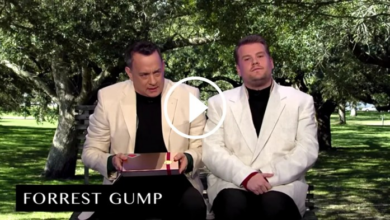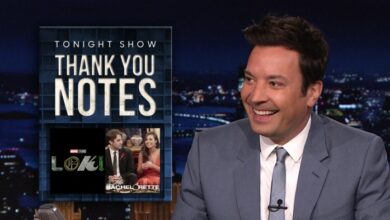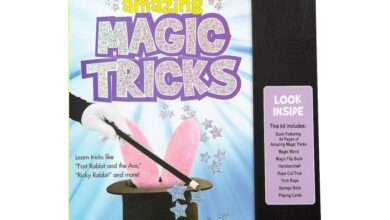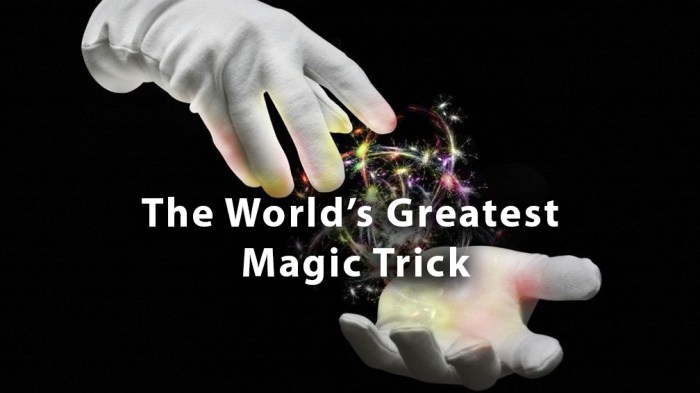
The Greatest Magic Trick: Unveiling the Secrets of Illusion
The Greatest Magic Trick: Unveiling the Secrets of Illusion – a phrase that conjures images of vanishing acts, mind-bending illusions, and impossible feats. But what truly defines the greatest magic trick? Is it the technical skill of the magician, the sheer awe of the audience, or the historical significance of the illusion itself?
The answer, like most things in magic, is a bit of a trick.
Throughout history, magicians have pushed the boundaries of what we believe possible, captivating audiences with their extraordinary abilities. From ancient sorcerers to modern masters of illusion, the art of magic has evolved alongside technology and human perception, leaving us to ponder the true nature of reality and the power of the human mind.
Defining “Greatest Magic Trick”
The concept of the “greatest magic trick” is inherently subjective, as it depends on individual preferences and what aspects of magic hold the most appeal. What one person considers the pinnacle of illusionary artistry, another might find underwhelming or even predictable.
Determining the “greatest” magic trick requires a framework for evaluation, taking into account various factors that contribute to its overall impact.
Criteria for Evaluating Magic Tricks
Several criteria can be used to assess the greatness of a magic trick. These criteria often overlap and interact, making it difficult to isolate one as the sole determinant of a trick’s success.
- Technical Skill:The level of technical skill required to execute a trick is often a key factor in its perceived greatness. Highly complex illusions, involving intricate mechanisms, precise timing, and masterful manipulation, command respect for the magician’s expertise. David Copperfield’s “Vanishing the Statue of Liberty” is a prime example, requiring an elaborate team effort and meticulous planning.
- Audience Impact:Ultimately, the impact of a magic trick is judged by its effect on the audience. A truly great trick creates a sense of wonder, disbelief, and even awe. It leaves a lasting impression, prompting discussion and contemplation long after the performance is over.
Penn & Teller’s “Bullet Catch” is a classic example, where the sheer audacity and potential danger of the trick create a visceral reaction in the audience.
- Historical Significance:Some magic tricks achieve lasting recognition due to their historical significance. They might represent a breakthrough in technique, introduce a new genre of magic, or challenge conventional notions of what is possible. The “Levitation of Jean Eugene Robert-Houdin,” a celebrated illusionist of the 19th century, was considered groundbreaking at the time, contributing to the development of stage magic as we know it today.
- Innovative Techniques:Magic tricks that introduce innovative techniques or push the boundaries of illusionary artistry are often considered groundbreaking. These tricks might utilize new technology, incorporate elements of performance art, or explore the psychological aspects of deception. The “Pepper’s Ghost” illusion, a technique that uses mirrors and projections to create ghostly apparitions, has been used in various forms throughout history, showcasing its enduring impact on the world of magic.
Historical Perspective
Magic tricks have captivated audiences for centuries, evolving from ancient rituals to modern marvels. This journey reveals the influence of societal changes, technological advancements, and the ingenuity of skilled performers who have shaped the art of illusion.
Ancient Origins, Greatest magic trick
Magic’s roots can be traced back to ancient civilizations. In ancient Egypt, priests performed elaborate rituals and illusions to impress the populace and demonstrate their connection to the divine. The use of hidden compartments, sleight of hand, and optical illusions were common techniques.
The greatest magic trick isn’t making a rabbit disappear or levitating a person, but the way time seems to vanish in a blink. It’s a trick we all experience, and as we turn the page on another year, I’m reminded of its power.
So, happy new year to you and yours , and may the magic of time continue to weave its wonder into your life. After all, the greatest magic trick is the one we all perform every single day, just by being alive.
For instance, the “Cup and Balls” trick, a staple of modern magic, is believed to have originated in ancient Egypt. The Egyptians used a cup and a ball to create the illusion of a ball disappearing and reappearing, showcasing their mastery of misdirection and sleight of hand.
Medieval Magic
During the Middle Ages, magic was often associated with the supernatural and occult. Magicians, known as “sorcerers” or “wizards,” performed tricks that were seen as evidence of their supernatural powers. These performances often involved elaborate props and costumes, creating an atmosphere of mystery and awe.
While the use of sleight of hand and illusions persisted, the emphasis shifted towards more theatrical presentations, with the magician taking on the role of a mysterious and powerful figure. This period also saw the emergence of “conjuring” tricks, where objects appeared, disappeared, or transformed.
One notable example is the “Floating Lady” illusion, where a performer appeared to levitate in mid-air, a feat attributed to supernatural powers at the time.
The Renaissance and Enlightenment
The Renaissance and Enlightenment brought about a renewed interest in science and reason. This shift led to a decline in the belief in supernatural powers, and magic began to be seen more as a form of entertainment rather than a mystical art.
The greatest magic trick, in my opinion, is the one that makes you question reality itself. It’s not about pulling a rabbit out of a hat, but about making you wonder how something seemingly impossible could have happened. And that’s exactly what we’re going to be doing on the news we are going to be on the news , showcasing a trick that will leave you questioning everything you thought you knew.
Get ready to be amazed!
The focus shifted towards developing more sophisticated techniques and illusions, utilizing principles of optics, mechanics, and psychology. The invention of the printing press and the spread of knowledge allowed for the dissemination of magical secrets and techniques, leading to the development of new and more complex illusions.
The “Pepper’s Ghost” illusion, invented in the 19th century, is a prime example of how scientific understanding was incorporated into magic. This illusion utilizes a sheet of glass and a hidden image to create the illusion of a ghost appearing on stage.
Modern Magic
The 20th and 21st centuries have witnessed a surge in the popularity of magic. Modern magicians have embraced technology, incorporating lasers, robotics, and digital effects into their performances. The development of new materials and techniques has allowed for the creation of more elaborate and realistic illusions.
The rise of television and social media has also played a significant role in popularizing magic, giving magicians a wider audience and platform to showcase their skills. Magicians like David Copperfield, Penn & Teller, and Criss Angel have become household names, inspiring a new generation of aspiring magicians.
Modern magic is a blend of traditional techniques and cutting-edge technology, creating a spectacle that continues to amaze and entertain audiences worldwide.
The Psychology of Magic: Greatest Magic Trick

Magic tricks are more than just sleight of hand and illusions; they are a fascinating study in human perception and psychology. Magicians exploit our natural cognitive biases and perceptual limitations to create the illusion of the impossible. This exploration delves into the psychological principles that make magic tricks so effective, revealing how magicians manipulate our minds to create a sense of wonder and disbelief.
Manipulation of Perception
Magicians masterfully manipulate our perception to create the illusion of magic. They leverage the fact that our brains are constantly trying to make sense of the world around us, often filling in missing information or making assumptions based on limited data.
This is known as “perceptual closure,” a phenomenon where our brains tend to complete incomplete patterns or images. Magicians use this to their advantage by creating illusions that play on our expectations and fill in the gaps with our imagination.
Attention and Misdirection
A key element of magic is the ability to control our attention. Magicians use misdirection techniques to divert our focus away from the crucial moments of the trick, allowing them to perform the necessary sleight of hand or manipulation without our notice.
This is often achieved through a combination of visual and auditory distractions, such as engaging in conversation, using elaborate props, or creating dramatic movements that draw our attention away from the actual mechanics of the trick.
Cognitive Biases
Magicians capitalize on our inherent cognitive biases, which are systematic errors in our thinking that can influence our perception and decision-making. For example, the “confirmation bias” leads us to favor information that confirms our existing beliefs, making us more likely to accept the illusion as real.
The greatest magic trick isn’t making a rabbit disappear or levitating a person, it’s transforming a simple piece of fabric into something extraordinary. A fabulous fabric scarf can be a statement piece, a practical accessory, or even a powerful symbol, depending on how it’s styled and the story it tells.
That’s the real magic – the power of transformation that lies within every thread.
The “availability heuristic” makes us overestimate the likelihood of events that are easily recalled or vivid in our memories, making us more susceptible to the magician’s storytelling and dramatic presentation.
Examples of Psychological Techniques
- Misdirection: A magician might perform a card trick by using a series of elaborate flourishes and gestures to draw attention to the wrong hand or card, while secretly performing the actual manipulation in the other hand. This technique, known as “misdirection,” allows the magician to perform the trick without our awareness.
- Suggestion: A magician might use suggestive language to plant ideas in our minds, leading us to believe something that isn’t actually true. For example, they might suggest that a particular card is “lucky” or “special,” making us more likely to believe that it has some magical properties.
- Selective Attention: Magicians use our selective attention to focus on specific aspects of the trick, while distracting us from the crucial elements. For example, they might create a visual spectacle with smoke and mirrors, drawing our attention to the smoke while secretly manipulating the object in the background.
The Art of Illusion
Magic is not just about sleight of hand and tricks; it’s about creating an experience, a story, a moment of wonder. Magicians use the art of illusion to transport their audience to a realm of the impossible, where reality bends and expectations are shattered.
This art involves a skillful blend of visual storytelling, theatrical performance, and psychological manipulation, all orchestrated to create an unforgettable experience.
Visual Storytelling
The visual elements of a magic trick are crucial to its success. Magicians use visual storytelling to create a narrative that engages the audience’s imagination. They use props, costumes, and lighting to create a sense of mystery and intrigue, drawing the audience into the world of the trick.
A well-constructed visual narrative allows the audience to follow the story of the trick, creating a sense of anticipation and wonder.
The Importance of Stage Presence
A magician’s stage presence is critical to their success. They must command the attention of the audience, creating a sense of connection and intimacy. Their movements, gestures, and voice should all contribute to the overall performance, enhancing the illusion and captivating the audience.
A strong stage presence can make even the simplest trick seem extraordinary.
Audience Engagement
A magician’s success depends on their ability to engage the audience. They must create a sense of participation, inviting the audience to become part of the experience. This can be achieved through eye contact, interaction, and a sense of shared discovery.
By making the audience feel like they are part of the trick, the magician can enhance the sense of wonder and disbelief.
Dramatic Pacing
The pacing of a magic performance is essential for creating suspense and drama. A magician must carefully control the timing of their movements, words, and reveals, building anticipation and keeping the audience on the edge of their seats. A well-paced performance will leave the audience wanting more, creating a lasting impression.
Props, Costumes, and Lighting
Magicians use props, costumes, and lighting to enhance the illusion and create a specific atmosphere. Props can be used to misdirect the audience’s attention, create a sense of mystery, or simply add to the visual spectacle. Costumes can help to establish the magician’s persona, adding to the overall theatrical effect.
Lighting can be used to create shadows, highlight specific elements, and manipulate the audience’s perception.
Modern Magic and Technology
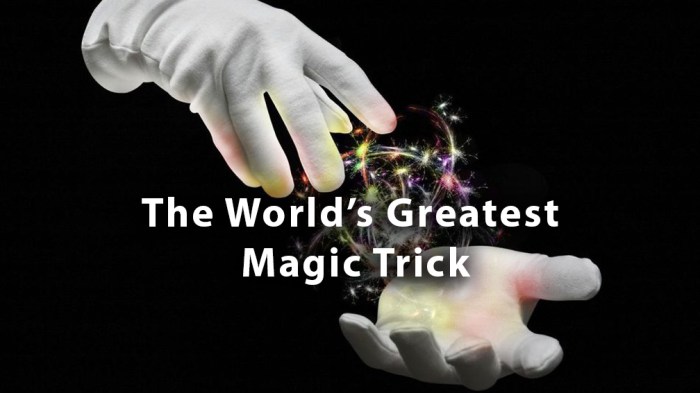
Magic has always been about pushing the boundaries of what is possible, and in the 21st century, technology has become an indispensable tool for magicians. Modern technology has revolutionized the way magic is created, performed, and experienced, offering new possibilities for illusion and wonder.
The Impact of Technology on Magic
Technology has profoundly impacted the creation and execution of magic tricks. The integration of technology has allowed magicians to achieve feats that were previously unimaginable. For example, the use of computer-generated imagery (CGI) enables magicians to create realistic illusions, making objects appear and disappear, transport themselves across space, and even defy the laws of physics.
Special Effects and Digital Manipulation
The advent of special effects software and digital manipulation techniques has transformed the landscape of magic. Magicians can now create illusions that are more intricate and visually stunning than ever before.
- Computer-Generated Imagery (CGI):CGI allows magicians to create lifelike virtual environments and characters, enhancing the illusion and creating immersive experiences. For example, a magician might use CGI to create a virtual stage, complete with props and scenery, that appears to be real.
- Digital Video Editing:Magicians can use digital video editing software to manipulate footage, seamlessly blending different shots and creating the illusion of impossible events. For example, a magician might edit footage to make it appear as though they are levitating or teleporting.
- Augmented Reality (AR):AR technology allows magicians to overlay digital elements onto the real world, creating interactive and engaging illusions. For example, a magician might use AR to project virtual objects onto a stage, making them appear to interact with the real world.
Robotics and Automation
The rise of robotics and automation has also opened up new possibilities for magic. Magicians can now use robots to perform complex maneuvers, handle delicate objects, and even interact with the audience.
- Robotic Assistants:Robots can be programmed to assist magicians in performing intricate tricks, such as manipulating cards, levitating objects, or creating illusions of teleportation.
- Automated Props:Robots can be used to control props and mechanisms, making them appear to move and behave in unexpected ways. For example, a robot might be used to control a spinning top that appears to defy gravity.
Examples of Innovative Magic Tricks
Several magicians have embraced technology to create groundbreaking magic tricks.
- Penn & Teller:This famous magic duo has incorporated technology into their act for years, using a combination of special effects, robotics, and digital manipulation to create illusions that are both visually stunning and mind-boggling.
- David Blaine:Blaine has used technology to create illusions that push the boundaries of what is possible, such as levitating over the River Thames using a hidden platform and a harness.
- David Copperfield:Copperfield is known for his grand-scale illusions, often utilizing elaborate sets, special effects, and even helicopters to create his signature tricks.

